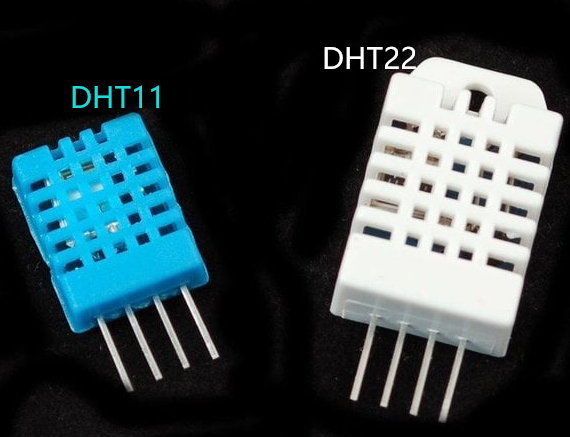DHT11 vs DHT22: Datasheet, Pinout, and Differences
Catalog
Introduction
DHT11 vs DHT22 Overview
DHT11 vs DHT22 Datasheet
DHT11 vs DHT22 Pinout
DHT11 vs DHT22 Other Differences
Conclusion
Introduction:

Temperature and humidity sensors are vital components in various applications, including weather monitoring, HVAC systems, and agriculture. Two commonly used sensors in this category are the DHT11 and DHT22. In this article, we will compare these sensors based on their datasheets, pinouts, and other key differences. This analysis aims to help you understand their characteristics and choose the appropriate sensor for your specific application.
Overview:
The DHT11 and DHT22 sensors are digital temperature and humidity sensors that utilize a capacitive humidity sensor and a thermistor to measure the respective parameters. Here is an overview of their key specifications:
DHT11:
Temperature Range: 0°C to 50°C
Humidity Range: 20% to 80%
Accuracy: ±2°C for temperature, ±5% for humidity
Refresh Rate: 1 Hz
DHT22:
Temperature Range: -40°C to 80°C
Humidity Range: 0% to 100%
Accuracy: ±0.5°C for temperature, ±2% for humidity
Refresh Rate: 0.5 Hz
Datasheet
DHT11 Datasheet
DHT22 Datasheet
The datasheets provide detailed information on electrical characteristics, timing diagrams, communication protocols, and application circuits. It is important to consult the datasheets for a comprehensive understanding of each sensor’s capabilities and limitations.
Pinout Comparison:
Both the DHT11 and DHT22 sensors have similar pin configurations, consisting of three pins: VCC, DATA, and GND. However, it is crucial to note that the DHT22 provides a more accurate and wider measurement range compared to the DHT11.Other Differences:
Temperature and Humidity Range: The DHT22 offers a wider temperature range (-40°C to 80°C) and can measure humidity from 0% to 100%. In contrast, the DHT11 has a limited temperature range (0°C to 50°C) and measures humidity from 20% to 80%.
Accuracy: The DHT22 provides higher accuracy in temperature measurement (±0.5°C) and humidity measurement (±2%) compared to the DHT11 (±2°C for temperature, ±5% for humidity).
Refresh Rate: The DHT11 has a higher refresh rate of 1 Hz, while the DHT22 operates at a slightly slower refresh rate of 0.5 Hz.
Price: The DHT11 is generally more affordable compared to the DHT22. The price difference can vary depending on the manufacturer and the purchasing source.
Conclusion:
The choice between the DHT11 and DHT22 sensors depends on the specific requirements of your application. If you require a wider temperature range, higher accuracy, and a broader humidity measurement range, the DHT22 is the suitable option. On the other hand, if your application operates within a limited temperature range and requires a lower-cost solution, the DHT11 can be a viable choice. It is important to consider the datasheets, pinouts, and other key differences to ensure that the selected sensor meets the desired performance criteria for your application.


















